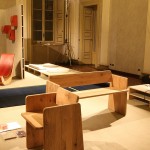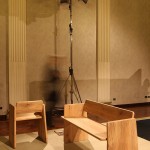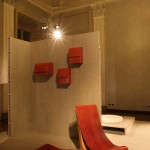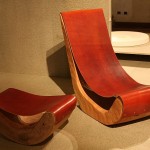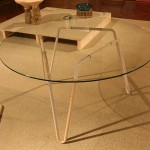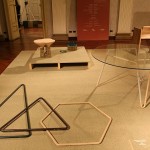smow blog compact Milan 2016 special: Belgian Matters
As we believe is now traditional at this time of year…..
….. every year at Milan Design Week the Belgian Design authorities proclaim that Belgium is Design. And every year we respond, that it isn’t.
But is a country with an awful lot of very talented designers………
The “Belgium is Design” claim is however the principle reason we decided to investigate contemporary Belgian creativity in a little more detail, to investigate as it were how much truth stood behind it, and to be able to better comment on it. Our interviews with Jean Angelats a.k.a. Ateliers J&J and Thomas Lommée are already online, others are on tape and in processing if not, yet, in print.
Amongst the numerous Belgian showcases at Milan Design Week 2016 was “Belgian Matters”, a project which paired seven Belgian designers with one of seven Belgian companies and asked them to develop a joint project: the sort of design project of which we invariably approve and which equally invariably produces some very enjoyable results.
As was the case with Belgian Matters.
For us the true stand out work at Belgian Matters was the Board Sofa and Board Chair by Brussels based designer Julien Renault in collaboration with the Walloon furniture manufacturer TimberGroup. We first came across Julien Renault’s work when he contributed to the exhibition Objects for the Neighbour during Passagen Cologne 2013, his Park Chair, we noted, “genuinely impressed us with its very self-confident form language”, and the Board family left a similar impression on us. Self-confident and very well proportioned objects, with both the Board Sofa and the Board Chair all the lines flow in logical directions, the curves make sense, the joints are implied more than proven, and all-in-all they emit a very harmonious, untroubled aura. If there was one slight irritation about the project it is that the wood used is salvaged wood from Canada. Obviously using salvaged wood is an eminently sensible idea. But why from Canada? Why can’t we leave salvaged Canadian wood in Canada for Canadians, and use salvaged European wood in Europe? It would appear to be not only the elegant, but for all the environmentally responsible, solution. The comments in the exhibition catalogue concerning the “…charm and warmth of the natural colour, matured with age…” remind us of all those European restaurants who proudly boast that their steaks come from Argentina. Obviously. Because there is such a shortage of cows in Europe! We don’t need Argentinian beef, southern hemisphere wine or salvaged wood from Canada; we do need to think a lot more about how, where and for all why we use our finite resources. Apart from that an absolutely inspired project and one whose subsequent development we are thoroughly looking forward to following.
In addition we very much taken by Thomas Lommée and Christiane Högner’s OS Plumbing system and by Kaspar Hamacher’s Low Chair and Stool realised in cooperation with Tannerie Radermecker.
Devised as an extension/further development of the OpenStructures concept OS Plumbing is a family of metal tubes, both straight and with a variety of curvatures, which thanks to a specially developed connecting system can be effortlessly and quickly combined into a myriad of forms and thus used as the basis for an equal myriad of furniture objects. And disassembled and reconfigured as, when and if required. In Milan the presentation was a table, but that should be considered more a suggestion than an instruction. With a diameter of 2 cm and the fixing points separated by a distance of 4 cm, the OS Plumbing tubes remain true to the dimensional ideals of the OpenStructures system and thus, we assume, are compatible with all other OpenStructures components. Aside from being a very elegant system in its own right what is perhaps most interesting about OS Plumbing is that it offers a more market orientated variation of the OpenStructures system than was hitherto the case, it is an a way less conceptual, more tangible, universally accessible, and thus would appear to offer what Thomas Lommée referred to as a way “to bring it from research to realisation, to produce parts so that it can spread, as a project it needs to spread to exist.” For our part we certainly hope they find partner who has the good sense/bravery/blind faith to allow it to do just that.
Kaspar Hamacher was one of the first contemporary Belgium designer’s to attract our attention, seeing his wooden shelf “Das Brett” at the 2009 [Les Belges] showcase remaining one of our defining Milan moments, and for Belgian Matters Kaspar Hamacher once again did that which he does with an unnerving and unassuming grace, implicitness and consistency: carved wood. And then added a very pleasing second dimension in the form of a leather sling seat, or in the case of the stool a leather sling seat/foot rest/table top. Brutal and imposing objects, both the Low Chair and the Stool also have a propriety about them which quietly whispers to you that the brutality is just show, invest a few minutes and you’ll get to know my real character. Sadly we didn’t get to try them and thus cannot confirm if they deliver the comfort promised. But let’s just assume they do.
As was to be expected Belgian Matters didn’t prove that Belgium is Design. Because it isn’t. But Belgian Matters did ably demonstrate that Belgium Matters, and that as a country Belgium has a very pleasing and unexpected depth of creativity.
Something we are planning to continue to explore, chart, but principally enjoy. And a journey we can heartily recommend.
Full details on Belgian Matters and all the projects realised can be found at www.belgiumisdesign.be
- Board Sofa & Board Chair by Julien Renault for TimberGroup, as seen at Belgian Matters, Milan 2016
- Board Sofa & Board Chair by Julien Renault for TimberGroup, as seen at Belgian Matters, Milan 2016
- Low Chair and Stool by Kaspar Hamacher with Tannerie Radermecker, on the wall Bag on Wall by Mathias van de Walle with Ralph Baggeley, as seen at Belgian Matters, Milan 2016
- Low Chair and Stool by Kaspar Hamacher with Tannerie Radermecker, as seen at Belgian Matters, Milan 2016
- OS Plumbing table by Thomas Lommée & Christiane Högner with OpenStructures, as seen at Belgian Matters, Milan 2016
- OS Plumbing by Thomas Lommée & Christiane Högner with OpenStructures, as seen at Belgian Matters, Milan 2016
Tagged with: Belgian Matters, Belgium, Belgium is Design, Julien Renault, Kaspar Hamacher, Milan, Milan Design Week, OpenStructures, Thomas Lommée, TimberGroup
